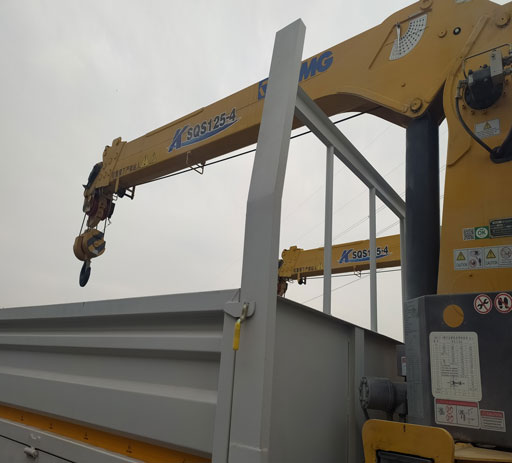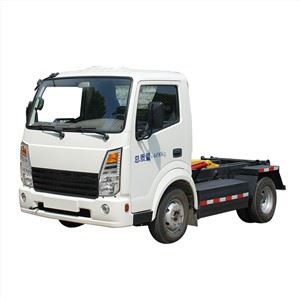Everything You Need to Know About the Peterbilt 520 Garbage Truck
The Peterbilt 520 garbage truck is a prominent choice in the waste management industry, known for its efficiency, durability, and comfort. This article dives deep into the specifications, features, benefits, and practical tips regarding the Peterbilt 520, helping professionals and enthusiasts alike understand why it remains a preferred option for waste collection.
Understanding the Peterbilt 520 Garbage Truck
The Peterbilt 520 is built to handle a variety of refuse collection needs, from household waste to commercial refuse. With its strong chassis, spacious cab, and versatile configurations, it offers an exceptional platform for various waste collection tasks.
Specifications Overview
| Specification | Details |
|---|---|
| Engine Options | Cummins ISL9 (320-380 HP) |
| Transmission | Allison 3000 or 4000 Series Automatic |
| GVWR | Up to 66,000 lbs |
| Wheelbase | Flexible, typically around 195-240 inches |
| Cab Configuration | Day cab or sleeper options available |
| Fuel Tank Capacity | Up to 100 gallons |
Key Features of the Peterbilt 520
Comfortable Cab Design
The Peterbilt 520’s cab is designed with the driver’s comfort in mind. It features ergonomic seats, a user-friendly dashboard layout, and ample storage space. This design reduces fatigue during long shifts and enhances overall driver satisfaction.
Robust Durability
Constructed with high-strength materials, the Peterbilt 520 is built to withstand the harsh conditions associated with waste collection. Whether it’s extreme weather or rough terrain, this garbage truck is designed for longevity and reliability.

Versatile Body Options
The 520 can accommodate various waste collection bodies, including rear loaders, front loaders, and side loaders. This versatility allows municipalities and private waste management companies to customize the truck according to their specific operational needs.
Performance and Efficiency
Engine and Transmission Performance
The Cummins ISL9 engine provides robust performance while also offering excellent fuel efficiency. The automatic transmission options allow for smooth shifting, making it easier for drivers to handle the truck during operation.
Fuel Efficiency Tips
- Maintain proper tire pressure to reduce rolling resistance.
- Schedule regular maintenance to ensure the engine runs efficiently.
- Train drivers on smooth driving techniques to optimize fuel consumption.
Safety Features
Advanced Braking Systems
The Peterbilt 520 is equipped with advanced braking systems, including anti-lock brakes (ABS) and optional electronic stability control features. These systems enhance safety and control, particularly in challenging driving conditions.
Visibility Enhancements
With large windows, well-placed mirrors, and optional camera systems, the visibility from the Peterbilt 520 cab is significantly improved, helping drivers navigate safely in tight urban environments.
Comparative Analysis
Peterbilt 520 vs. Competitors
When comparing the Peterbilt 520 to other garbage truck models, it’s important to consider aspects like cost, performance, and available features. Below is a brief comparison with two competitors:
| Characteristic | Peterbilt 520 | Freightliner Cascadia | International WorkStar |
|---|---|---|---|
| HP Range | 320-380 HP | 350-600 HP | 260-320 HP |
| GVWR | Up to 66,000 lbs | Up to 80,000 lbs | Up to 66,000 lbs |
| Driver Comfort | High | Medium | Medium |
Maintenance and Care
Routine Maintenance Schedule
Proper maintenance is key to maximizing the lifespan and performance of the Peterbilt 520. Below is a typical maintenance schedule:
| Service Interval | Service Needed |
|---|---|
| Every 5,000 miles | Oil change, filter replacement |
| Every 15,000 miles | Brake inspection, tire rotation |
| Every 30,000 miles | Transmission fluid change |
Common Issues and Solutions
- Engine Overheating: Check coolant levels and radiator for blockages.
- Poor Fuel Economy: Inspect fuel injectors and air filters.
- Brake Wear: Regularly check brake pads and rotors for wear.

Purchasing Options and Financing
New vs. Used Peterbilt 520
When considering purchasing a Peterbilt 520, it’s essential to weigh the benefits of buying new versus used:
- New: Warranty protection, latest technology, and custom configurations.
- Used: Lower cost, immediate availability, potential for lower depreciation.
Financing Options
There are various financing options available for purchasing a Peterbilt 520, including:
- Traditional bank loans
- Lease-to-own programs
- Manufacturer financing options
Environmental Considerations
Emission Standards Compliance

The Peterbilt 520 garbage truck is designed to meet stringent emission standards, making it a more environmentally friendly option in refuse collection. Understanding the environmental impact of waste management vehicles is crucial for modern municipalities.
Eco-Friendly Practices
- Promoting recycling and waste segregation.
- Using alternative fuels like compressed natural gas (CNG) where possible.
- Regular maintenance to ensure efficient operation and lower emissions.
FAQ Section
What is the average lifespan of a Peterbilt 520 garbage truck?
With proper maintenance, a Peterbilt 520 can last between 10 to 15 years, depending on usage and care.
Can the Peterbilt 520 be customized for specific refuse collection needs?
Yes, the Peterbilt 520 can be fitted with various body styles and modifications to meet specific operational requirements.
What are the safety features available in the Peterbilt 520?
The Peterbilt 520 includes advanced braking systems, visibility enhancements like large mirrors, and optional camera features to ensure driver and pedestrian safety.
Is financing available for purchasing a Peterbilt 520?
Yes, various financing options are available, including traditional loans, lease-to-own programs, and manufacturer financing.
What types of refuse collection bodies can be used with the Peterbilt 520?
The Peterbilt 520 can accommodate rear loaders, front loaders, and side loaders, allowing for flexibility in refuse collection operations.
How does the Peterbilt 520 perform in terms of fuel efficiency?
The Peterbilt 520 is designed for optimal fuel efficiency, especially when properly maintained and driven smoothly by trained operators.
